Now that has been a fantastic week, I can tell you, with my family first time sailing on my new boat GEKKO. This occasion has long been awaited, to be honest, dating back since my earliest days when I started sailing some 5 ears ago with buying my first boat, OLIVIA. At that time I gave up my race biking and marathon “career” as my first son was born and it was clear that I´d better be looking for a more family friendly hobby: Sailing seemed best. Now, finally, after such a long time, our first family sailing trip drew to an end and I´d like to share some insights, hints and revelations to help other sailing moms and dads pulling off their “first”.
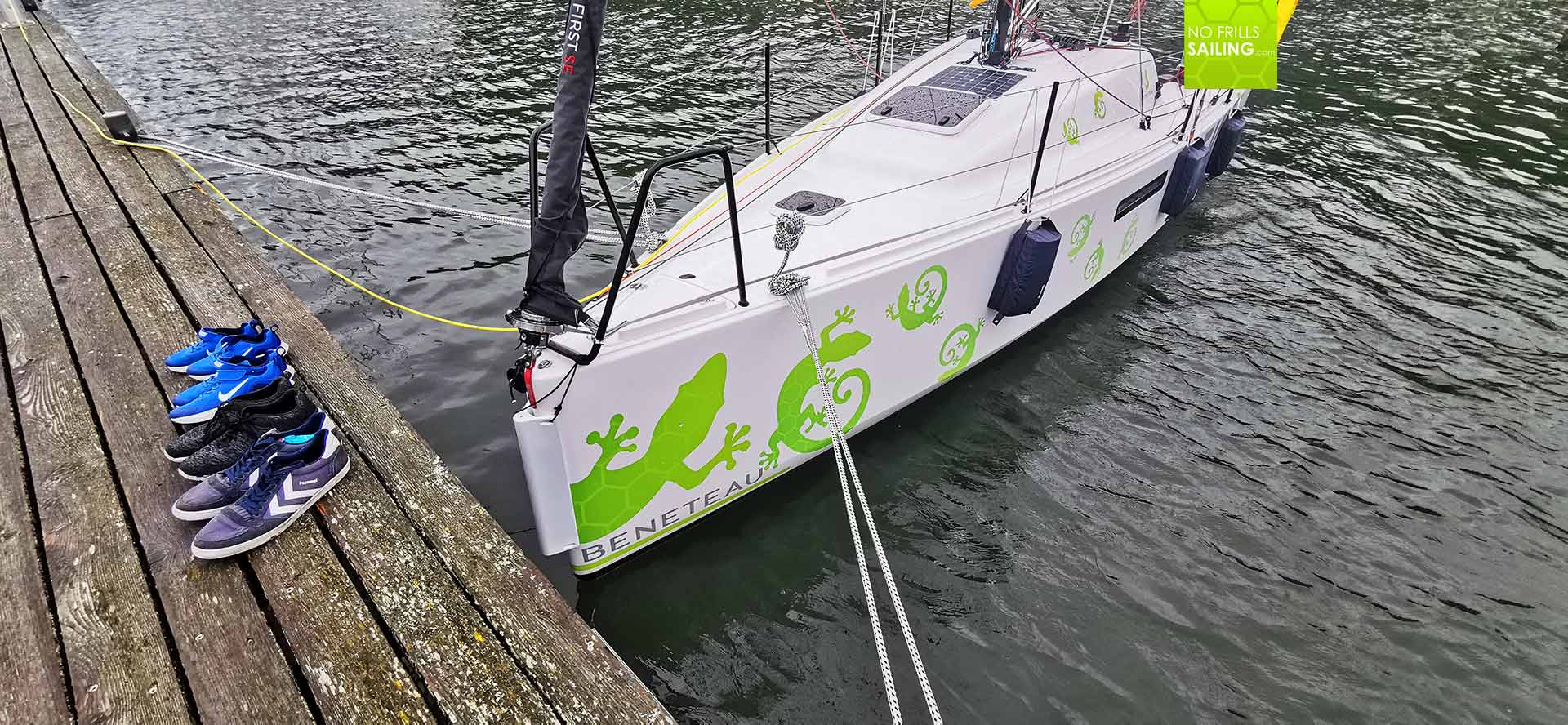
I had started preparing for that trip weeks and months ago by planning it. In this I might be a bit over-stressing the topic: I know of many sailing family who don´t plan a thing (and I now understand perfectly well why) but I am that type of planning guy. You might have read the article on planning this voyage. Basically, it ended in a big Excel-file which stated when I planned to be where, what to do there and which things could be done with the kids – both on and off board. I supposed this document to be just a faint kind of inspiration, but it helped to explain to my partner what I intended to do. Sharing is caring … but let´s start at the beginning.
Underway: Long or short sail times?
We arrived on a lush afternoon at the boat after a 3 hour drive on the Autobahn. Unloading was a bit of a pain in the ass as the car was stuffed with luggage and provisions. SO it took us some 2 or 3 hours just to get the boat to a state “ready to sail”. During that time it was a bit tricky to keep the kids occupied as – naturally – packing and stowing away wasn´t that kind of fun. I checked the weather forecast and saw that, for the next day, a very strong wind with TWS of sustained 24 knots was in predicted and decided not to leave. A wise decision, because this is way too much wind and waves for a first trip, for a first day and for my kids who were going on their first ever Trans-Baltic sailing trip.
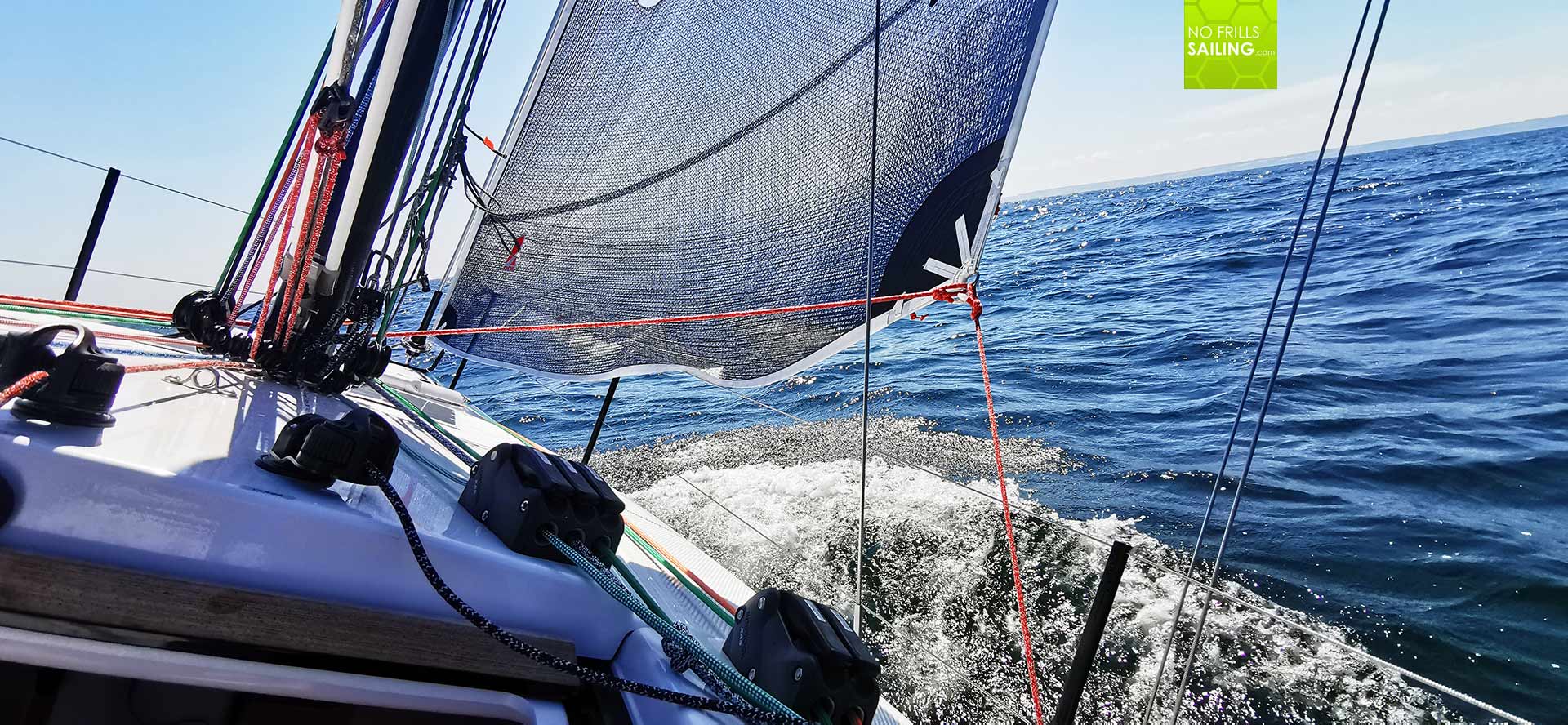
The decision was just perfect: Instead of leaving and pushing the boat through a stormy, rough sea, we spent a great day on out starting point, the Island of Ruegen, ate good food, had fun on the beach an, most important, that day “off” gave us all the chance to calm down, switch from “city mode” to vacation mood a dress rehearse boat life. On the second day we finally casted off. Before us an 86 mile passage crossing the Baltic Sea from South to North for the Island of Bornholm. A pretty long leg, some 13 hours in the end, but I figured it was the best start we could have.
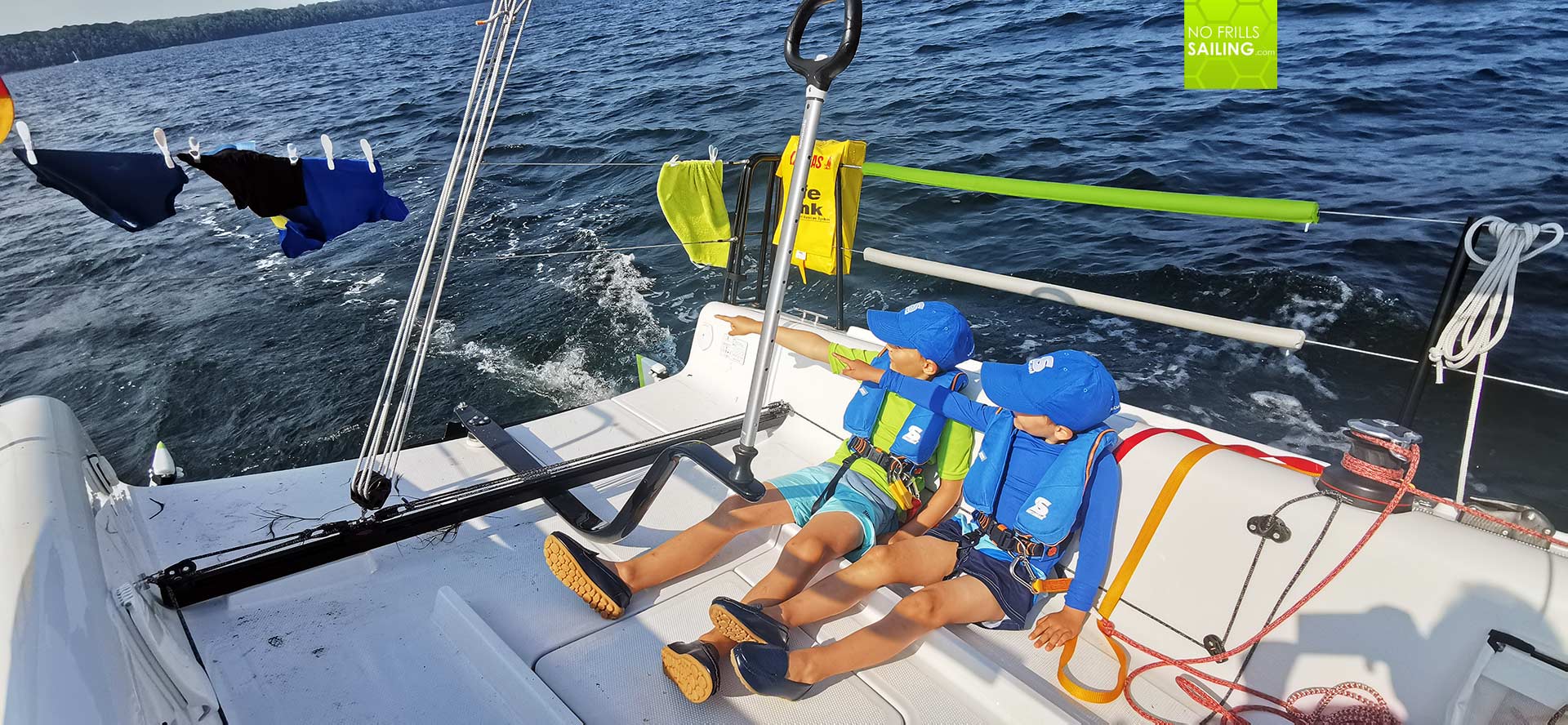
During the sailing, my kids pulled off all “rules” they had learned previously, such as being connected to a tether at all times when in the cockpit and – of course – wearing a life jacket. For them it was fun, although I learned that they were far less interested in the matter of sailing and tech technical part of it than I had thought. I tried to make my kids steer, which they refused. Well, I guess they are too young for it. Nevertheless, a question here and there, a remark now and then: It showed me that they liked it.
Keeping Kids busy
You may know that I had prepared a list of activities on board for my kids to keep them busy on the one hand but also to teach them some things. From time to time, when I figured they might be bored, I took out one of these “tasks” and tried to get them exciting. One of these “tasks” was to count the windmills of a big offshore windpark that is situated right in the middle of the distance Germany – Bornholm.
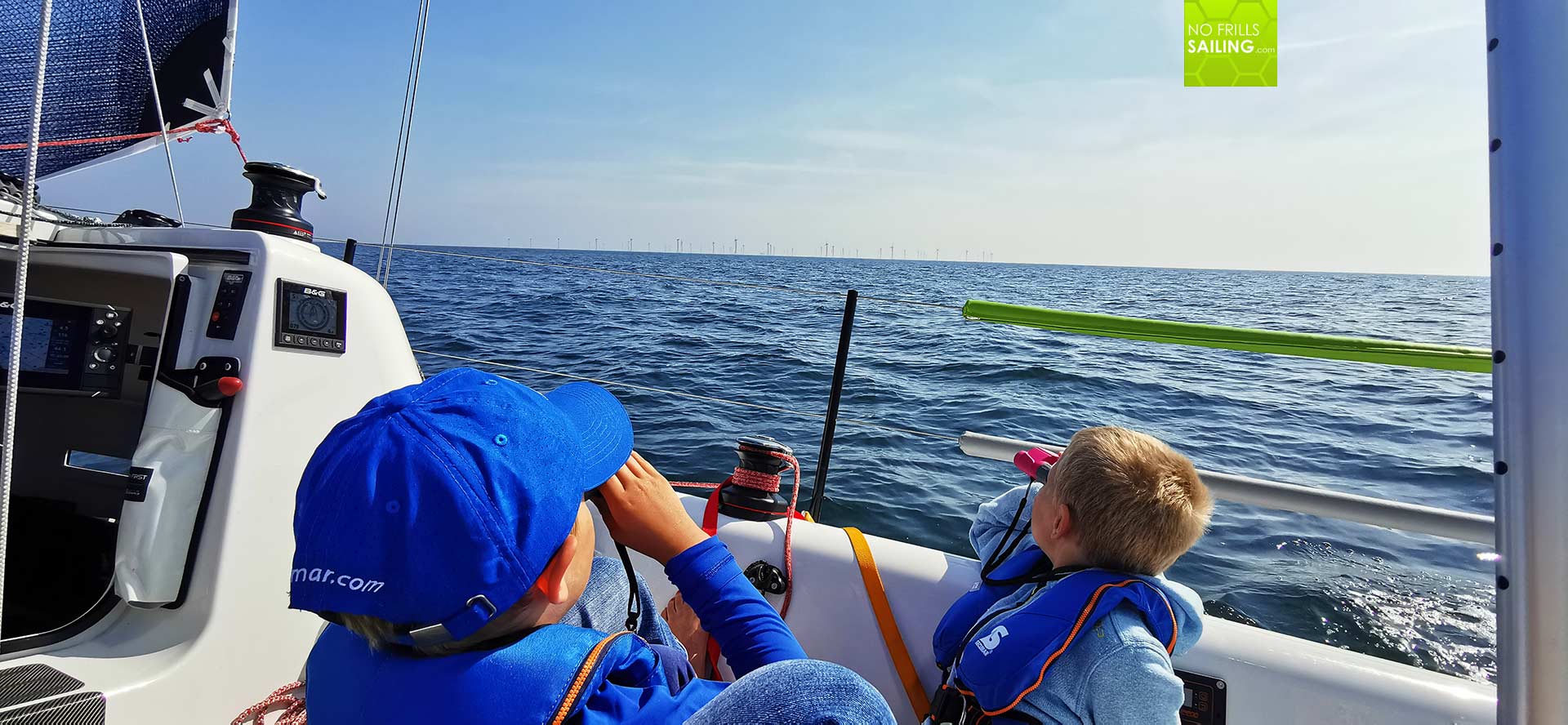
I thought that this might foster their ability to concentrate (the boat is rocking in the waves so counting is a delicate matter), it might train their concentration (counting little objects through binoculars in a moving boat is not easy and it might be fun. Well, it worked nicely as my boys took about half an hour and several attempts to count the windmills, even we as parents participated in this venture and it was great fun to verify our – very different – numbers later via internet.

Shipspotting is also a nice occupation when sailing. The Baltic Sea boasts with traffic separation schemes and thus with big freighters, tankers and ferry ships. Even cruise liners re-appear after Corona now and then. I urge the boys to look at a ship, try to describe her appearance (which color, containers or no containers, is a flag visible, what is her name and so forth) to teach them looking for markings and trying to identify a ship. Via AIS on my plotter we were able to tell which ship we had seen and that was a kind of fun too.
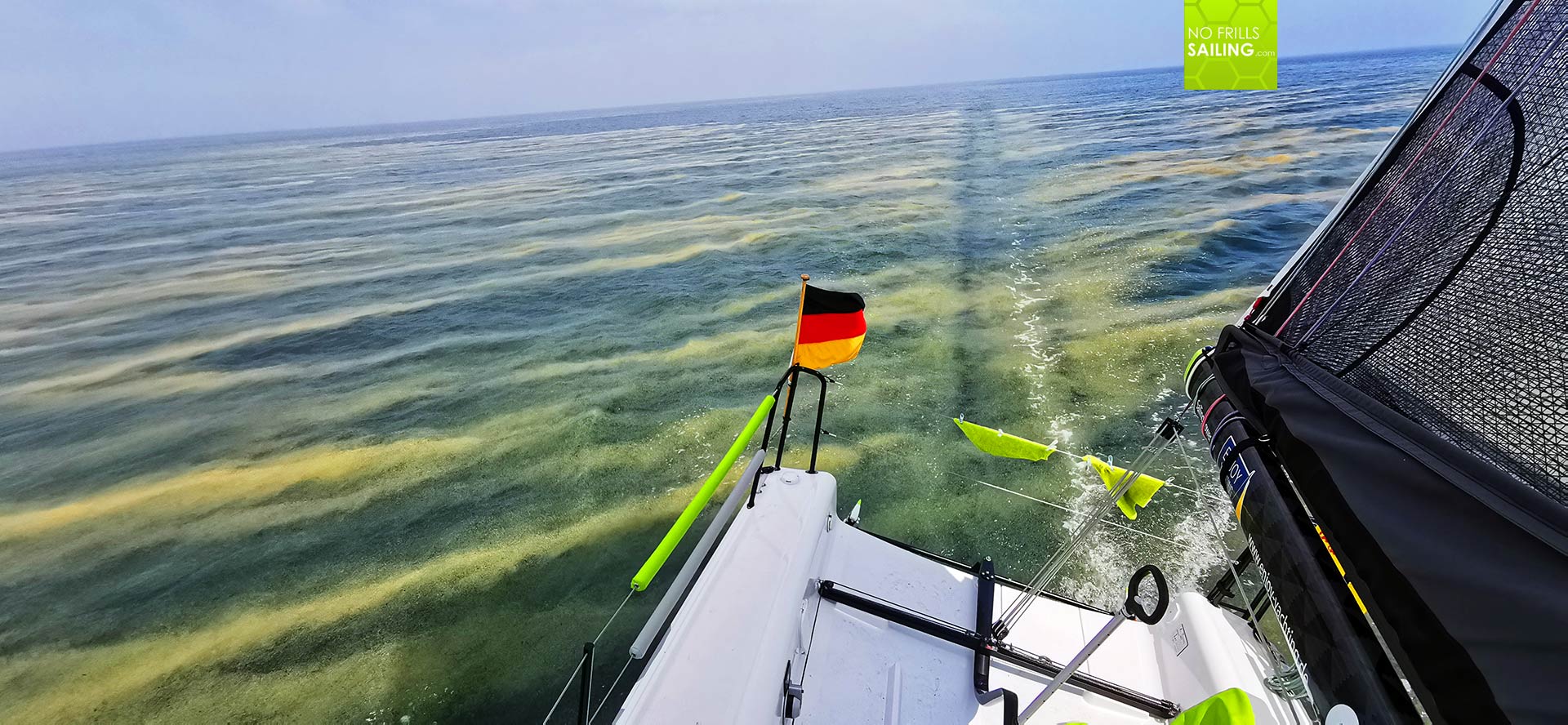
Another activity might have been looking for animals. Well, the Baltic Sea is not the liveliest place to look for marine life. This Ocean is suffering heavily from pollution and overfishing. Occasionally one can see common porpoise – the little sisters of the dolphin – but this year, sadly, we had to witness a different phenomenon. Blue Algae, a pest! The pale yellow carpets of algae were so plentiful that at times the boat sailed for hours through the yellow plague. It was sad and interesting at once, explaining to my boys that excessive fertilization and the flushing of fertilizers from the fields over rivers into the sea boosts the growing of the algae. A European pest really nobody is talking about. Sad to see, but as well an interesting occasion for us to show to the boys.
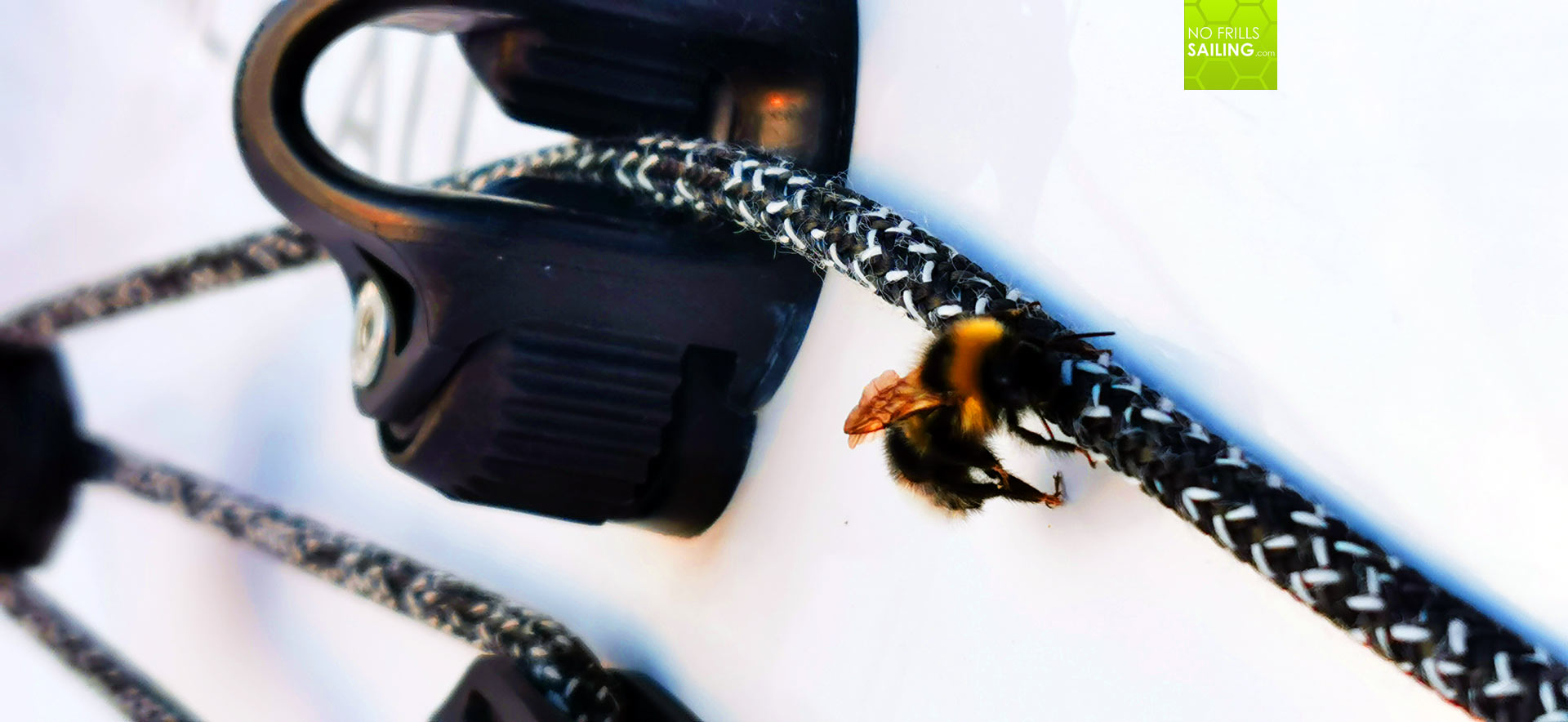
In the end we finally got an animal: A big bumblebee, far from the shores, used our GEKKO as landing platform. The poor insect was seemingly out of power, so we provided him/her with some fresh water and a protected place. Telling us stories about where this bumblebee might have come from, what her name might be (we decided, she was called “Marianne, the Bumblebee”) and what she might do when she reached Bornholm was a funny amusement. By the way, Marianne later disappeared, without “saying goodbye!”, as my younger son stated a bit frustrated.
Telling Stories
When nothing really happened aboard, when there was nothing to see and the horizon from left to right was just water and water and water, I switched to fiction. The seafaring history is full of stories which are gripping and fun for kids to tell to. One of them is the Legend of the Flying Dutchman. This story has everything young kids need to give their imagination a boost and keep them occupied for a while.
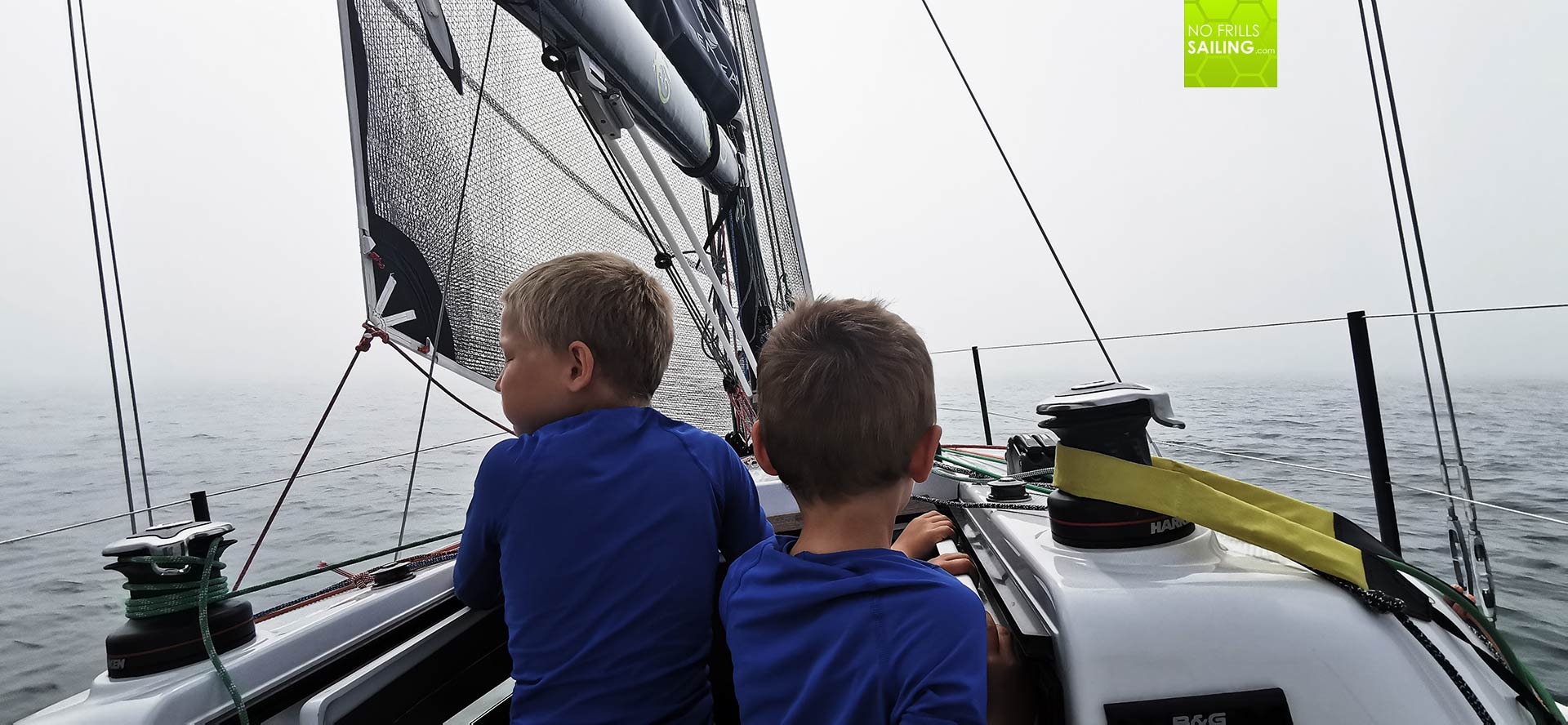
As GEKKO on our way back was sailing through the thickest of fogs you can imagine, I told them this story. “Can you fee a breeze of icy cold air touching your noses?”, I asked in a somber voice. “That might be the breath of the undead crew of the FLYING DUTCHMAN …”, and there we were, in the middle of a spooky misty day, telling the gruesome and tragic story of Captain van Diemen. Of course they knew that it was just a creepy story, but in the end they as well went to lookout if they could see the haunted ghost ship passing by.
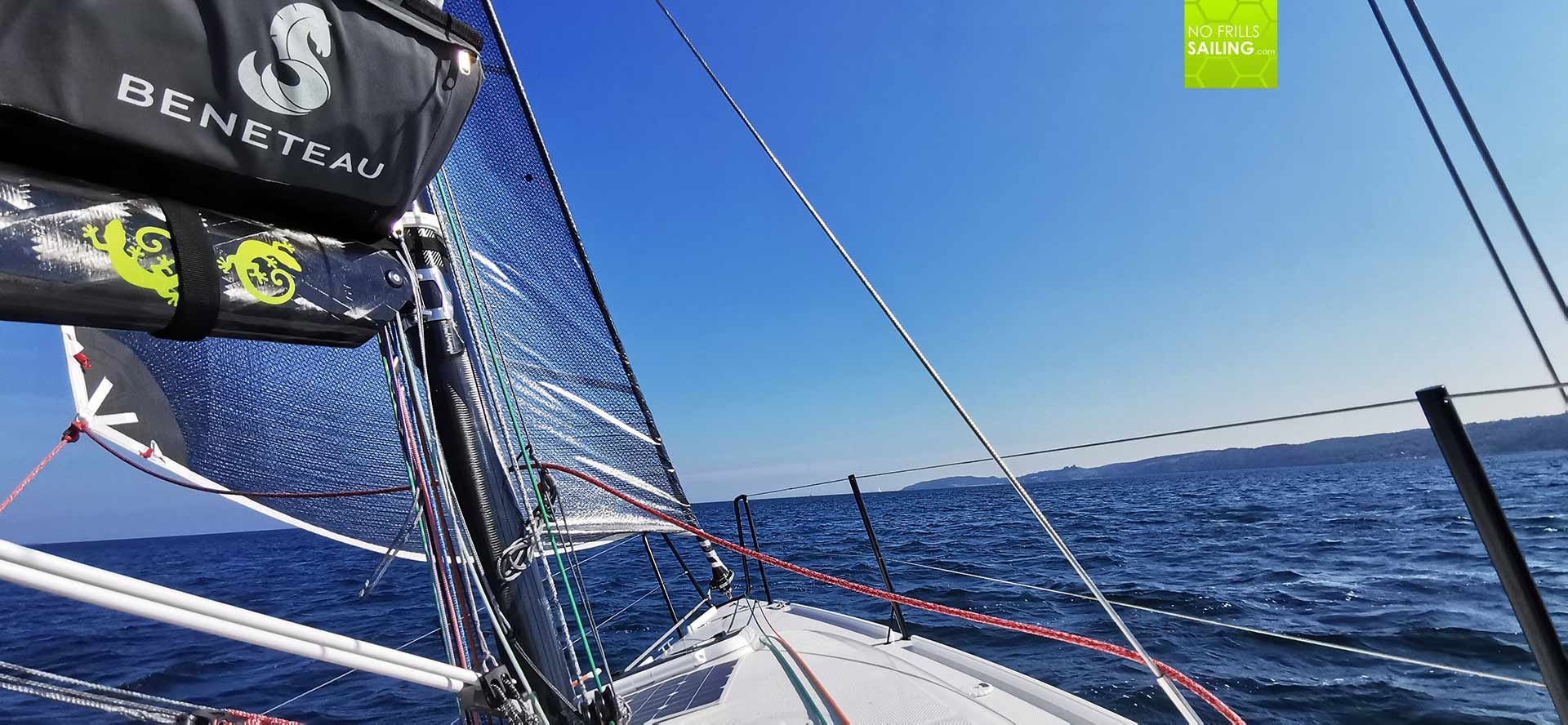
Of course, when wind was blowing to harshly, the boys went under deck. That was happening so naturally that we never had to send them down below, they always seemed to have a sense for risk and danger and asked well in advance if they could be un-tethered to go down. It seems unnatural to go down below when the boat rocks and moves heavily. Normally, to avoid seasickness, you might be wanting to stay up on deck as long as you can. I guess that does not apply to children.
Below Deck
My kids always feel safe and comfortable and perfectly at home when down below. We prepared the fore cabin with loads of blankets and pillows to create a room where they could be laying down, have a nap, look up through the hatch or just chill, listen to music or audio books. Luckily, my partner was so clever to bring a selection of Lego-toys and some action figures, which they always happily grabbed and played with, literally for hours.
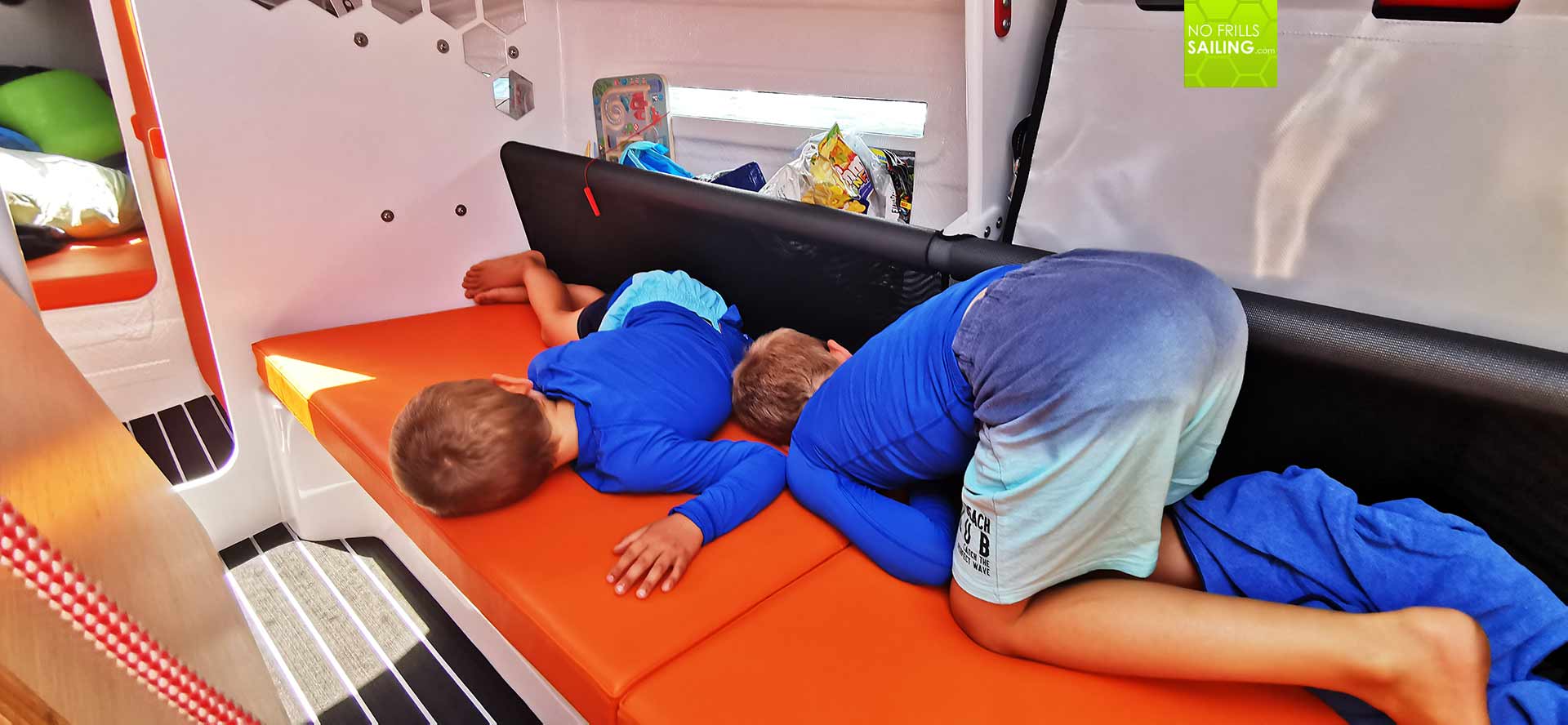
As much as my kids hate after-lunch sleep, they loved to take a nap on the boat. It comes automatically and so naturally that I made up a new rule, which they welcomed and cheered at. I said, when sailing “everybody can go to bed at the time he wants.” So the kids thought that there was no bed-time and no get-up time enforced like at home, and right they were. But in reality, they slept far more often, far longer and got up less early – just as automatic.

Playing is a big thing and I must admit that I under-estimated this topic. Their mom was more clever and thoughtful in this respect so I witnessed every day that the kids took out a large Lego-box, dumped it in the salon an played on for hours. They build up and destroyed imaginary fortresses, ships and vehicles. I loved to see this and especially to listen to their conversations as it showed their seemingly borderless imagination and fun. “You should never forget to bring Lego aboard”, a sentence you will find in my logbook of this trip very often.
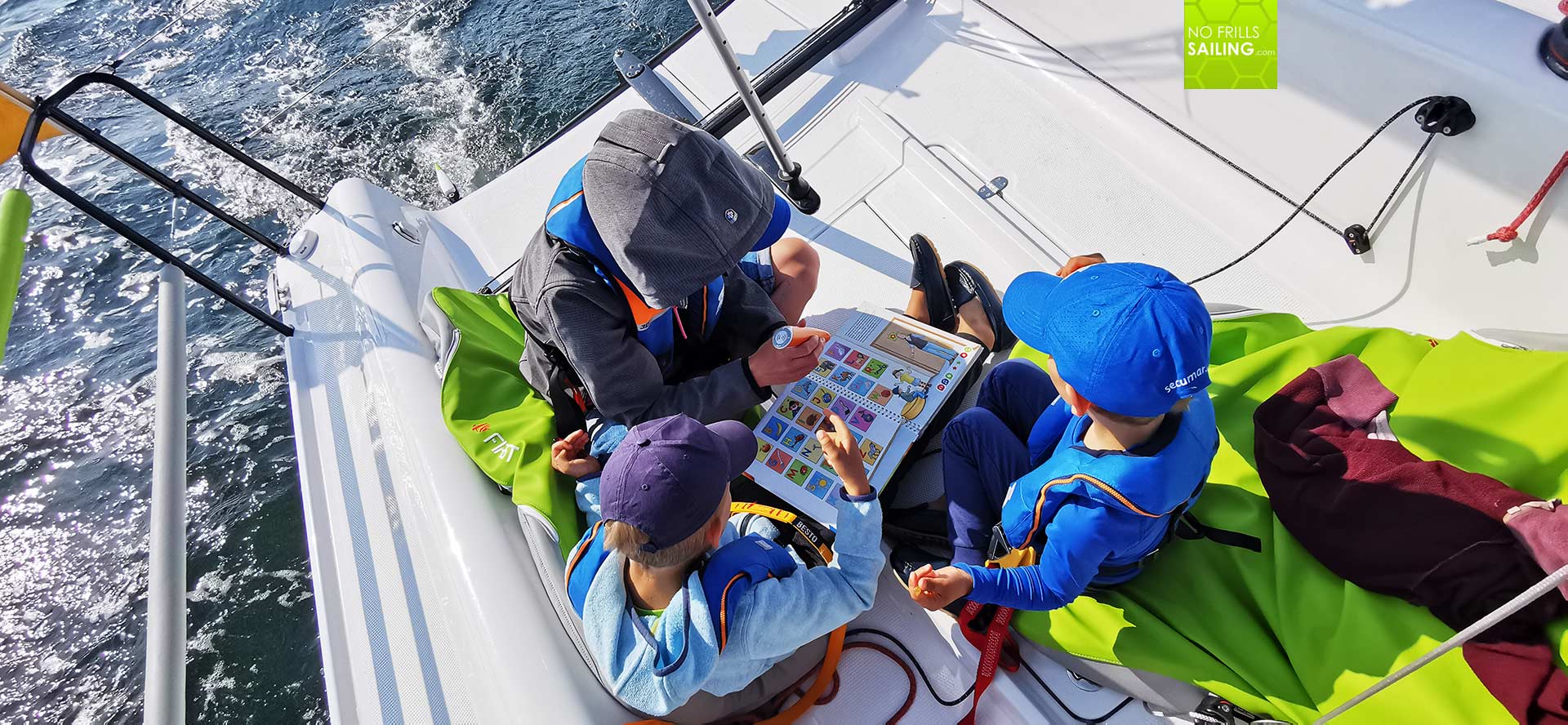
We also, of course, did not just keep our kids busy and away, but also invited them to interact with us. Now, I as captain and skipper, was mostly occupied with sailing the boat, navigating and trimming. That meant that mostly my partner interacted with the kids: Sometimes they sat down in the cockpit and played games, read a book or listened to audio files. It was great to see family life unfolding in GEKKO, touching my heart as the boat originally was intended to do exactly this.
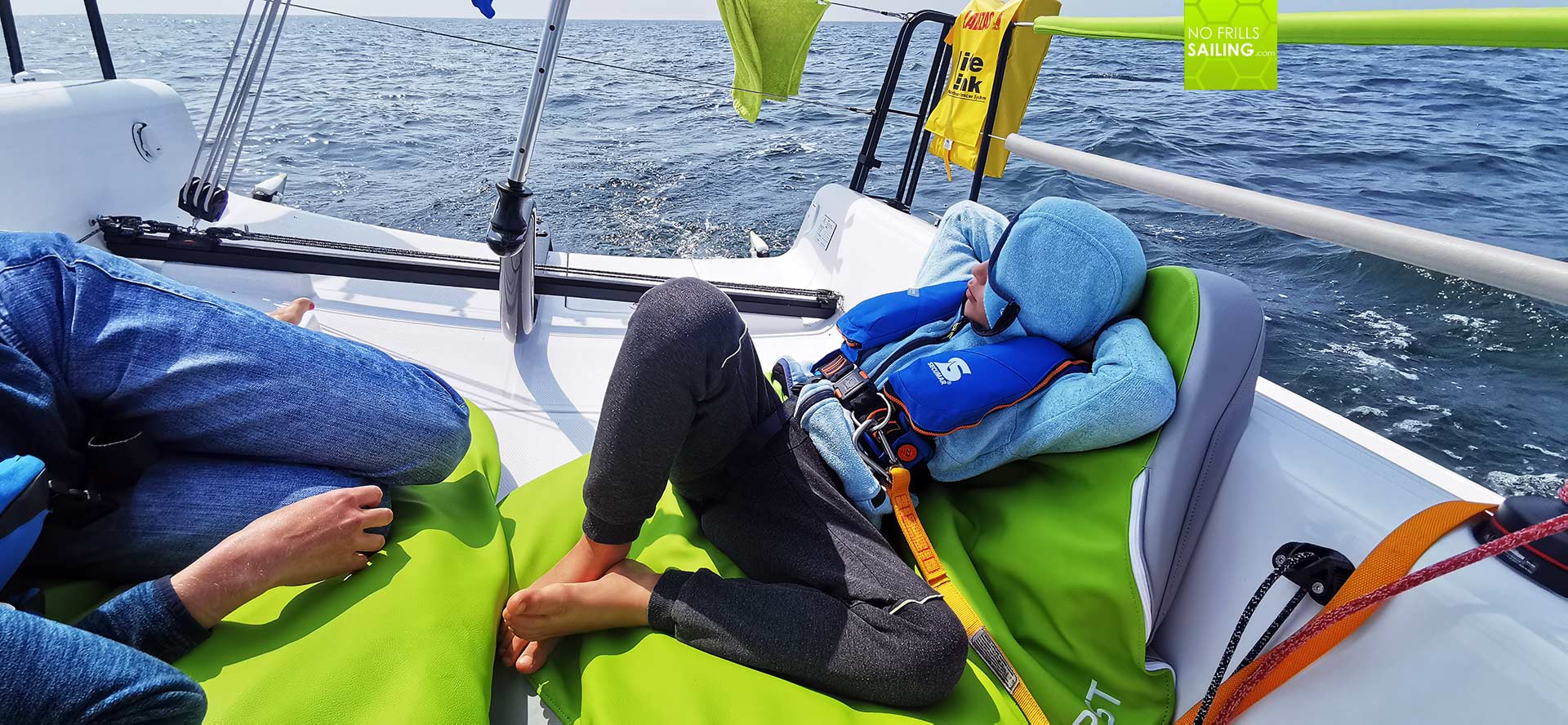
But, next to all these activities, sometimes it was just chilling. As rewarding and nice sailing is, it is also a very intensive and stressful (in the most positive of meanings) activity. Your muscles are always working stabilizing your body, the motion of the boat, grabbing onto holds with every step … it makes you tired easily. And that´s what I also learned: Provide for safe spots, for chillout areas and times when your young crew just can lay down, relax, have it warm and calm. It makes my heart jump every time when I think back of all of my crew happily sleeping away, trusting me and my boat their lives.
Number #1 Activity: Sleep
Which brings us to the topic of sleeping aboard with kids. Well, that was an easy one and far less complicated than I thought. My experience as a father is that – at home – it is often stressful and connected with endless discussions and tears at time when you try to get your kids to bed. The bedtime-arguments are plenty and unnerving. Well, that is normal. On a boat, at least with my kids, I happen to see quite the opposite: My kids literally asked to be brought to bed!
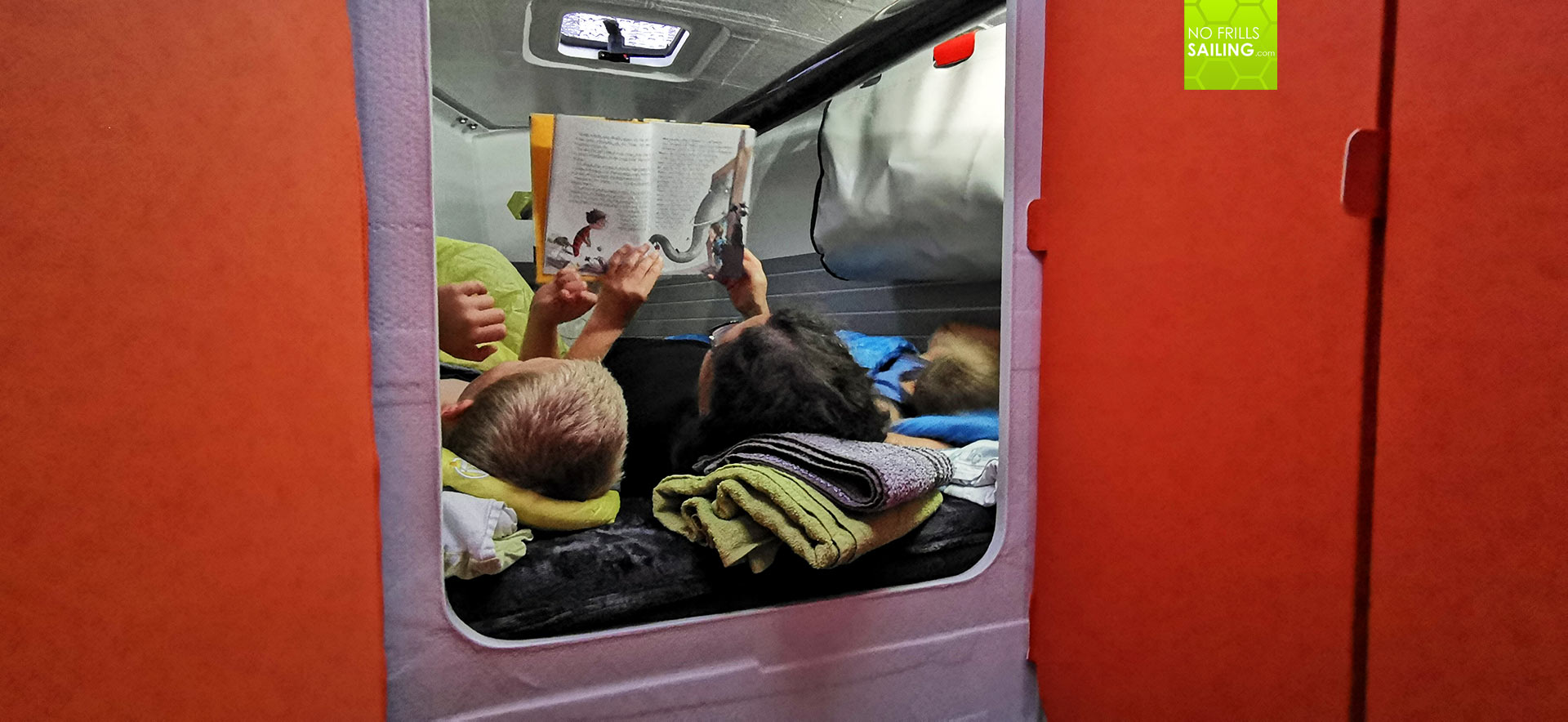
We arranged them to be cuddled to their mom in the fore cabing and getting read a good night story to every day. Living up to beloved rituals is even on board a boat a good thing. Mostly the kids slept away before the first page was turned. I then took my older son from the fore cabin to the salon where I provided him with his own bunk, right vis-à-vis from my berth. Our small son and mommy stayed in the front and this was just a perfect system we retained over the whole trip.

When at sea, both would be sleeping in the front cabin, but in harbor we managed to have two-by-two separation. In bigger boats you might have a kid´s cabin, which is far easier. Your kids will get up at a time of their choice and can start playing or talking without bothering the parents with their early bird-attitude. Well, on GEKKO, where there essentially is no cabin at all, that wasn´t so easy. But knowing that my older son is more likely to get up sooner, it was a no-brainer to have him sleeping with me. In this, I could get up together with him (I am a kind of early riser too), get my first morning coffee and have my one-on-one time with him in the morning.
Off-boating
We both enjoyed these one or two hours when mom and the youngest where asleep. When in harbour, we would slip in our shoes and go for an early morning walk. My son kind of enjoy these walks too as normally he would be one of two having to share us, his parents, with his brother. Now he was able to “have” me exclusively and he loved it. We would stroll around in the harbor looking at boats or even leave the marina to jump over stones, through things to the other or just roam the villages.
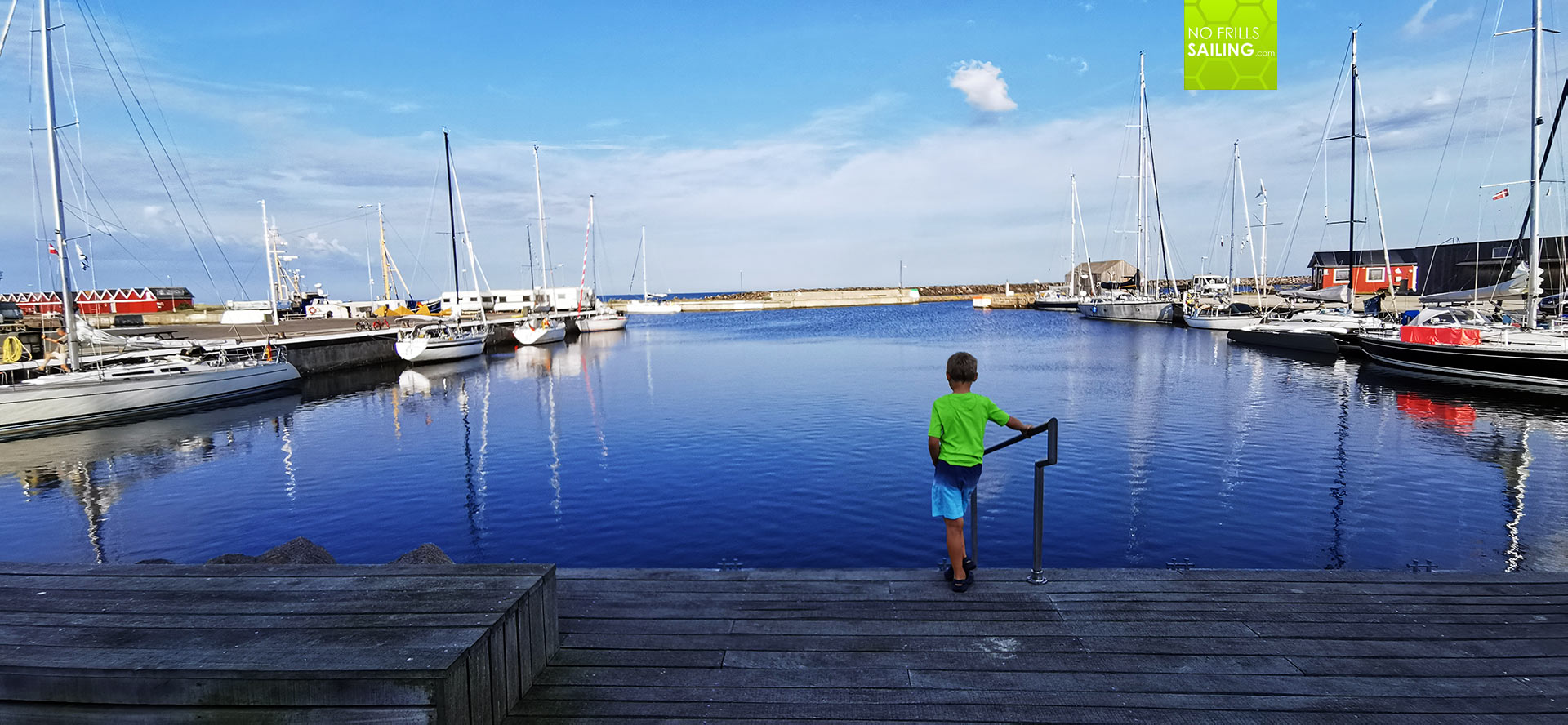
Bornholm is a great island with stunning nature. We could have sailed everywhere, of course, and my partner initially indeed asked if it would be necessary to sail “such a long way to this far destination”. But that distance was part of the plan: I wanted my kids to experience the matter of long travel to reach a far away island. I wanted them to first-hand getting to know what a voyage really is like: Not boarding a plane and racing eyeless through the world, but experiencing distance and time, perform work and efforts, to reach a destination. In this, after the undertaking, I wanted our destination to be as rewarding and exciting as it could. Having remained at home in German waters wouldn´t have reached that goal. So I chose a foreign country, beloved Denmark, and a stunning island: Bornholm.
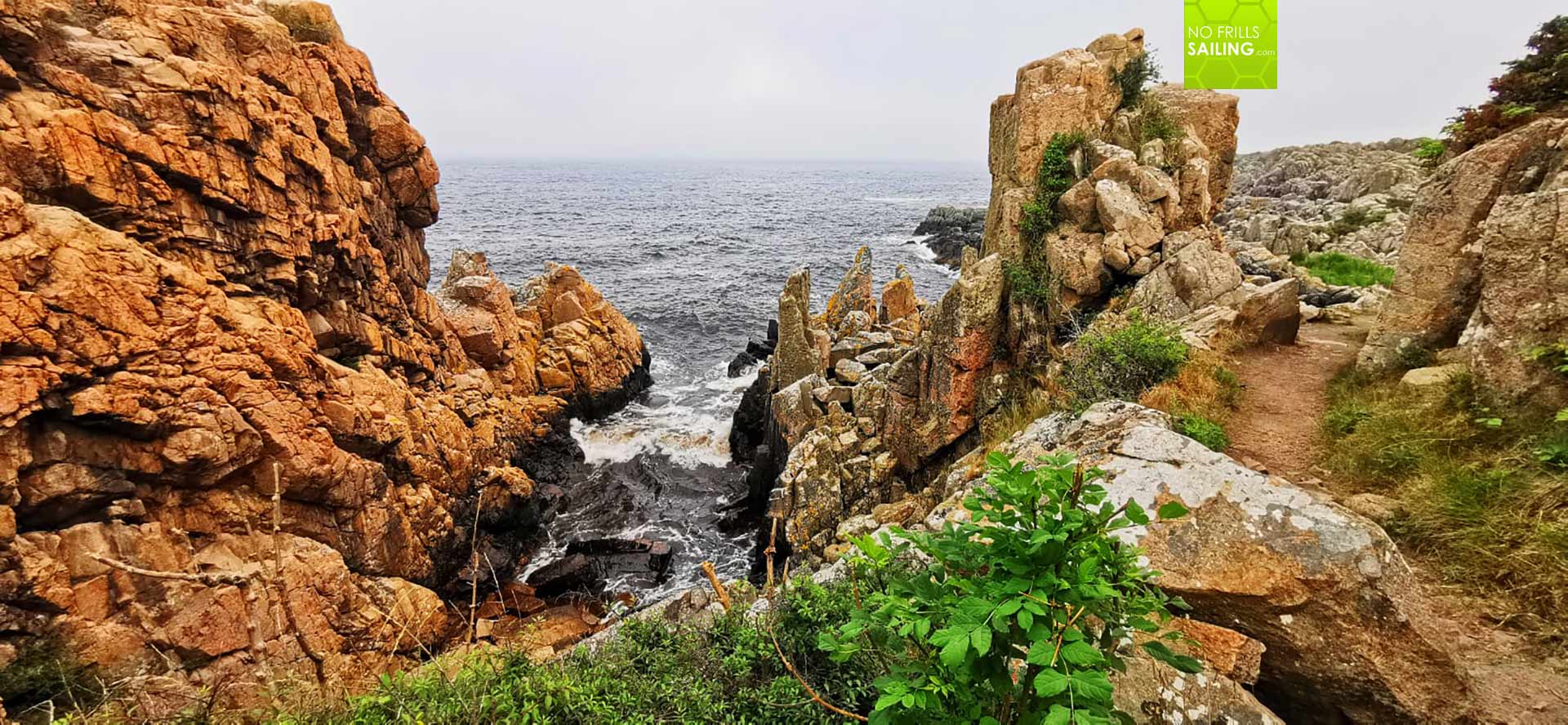
With which my family instantly fell in love with! Bornholm is such a beautiful island, boasting with nature, flowers, pretty people, tasty foods with a different taste at home. I took my son to “adventure hikes”, which essentially was just a walk in the nature outside the harbors, but for him it was a great fun to climb the rocks near the breakwaters, jump on hills to oversee the villages or just walking around, looking for interesting stones and stories.
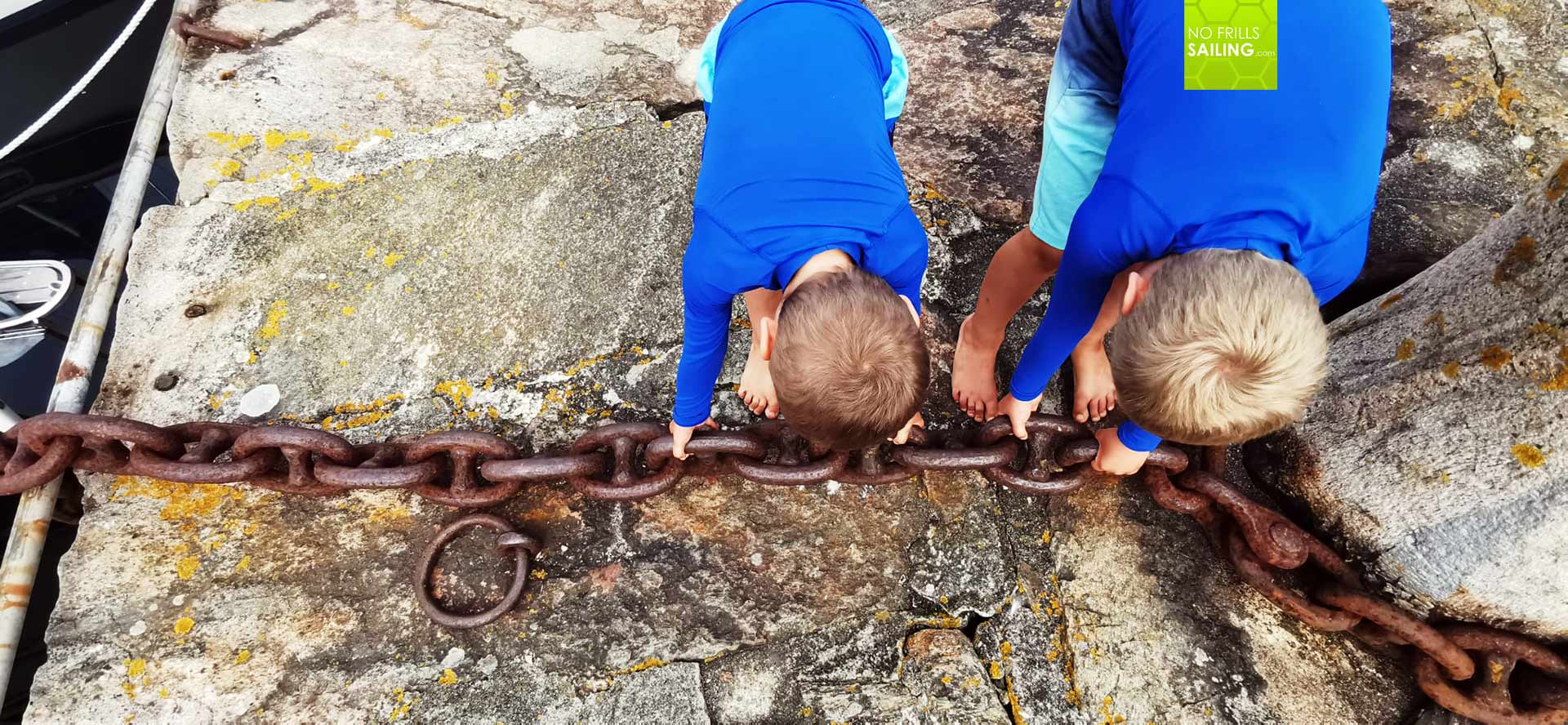
What we also always did was keeping up the tradition of the “harbor walks”, which I celebrate always when underway. Mostly the second day, I grab a can of beer and march the jetties of the marina. Looking at different boats is a favourite hobby of mine when berthed, greeting other sailors, chatting here and there and maybe finding interesting sailing yachts to admire and talk about. My kids, however, loved this too. Naturally they haven´t been all too much interested in seeing boats, but they liked identifying foreign flags or just play aorund with stuff they found in the harbour, like anchor chains.
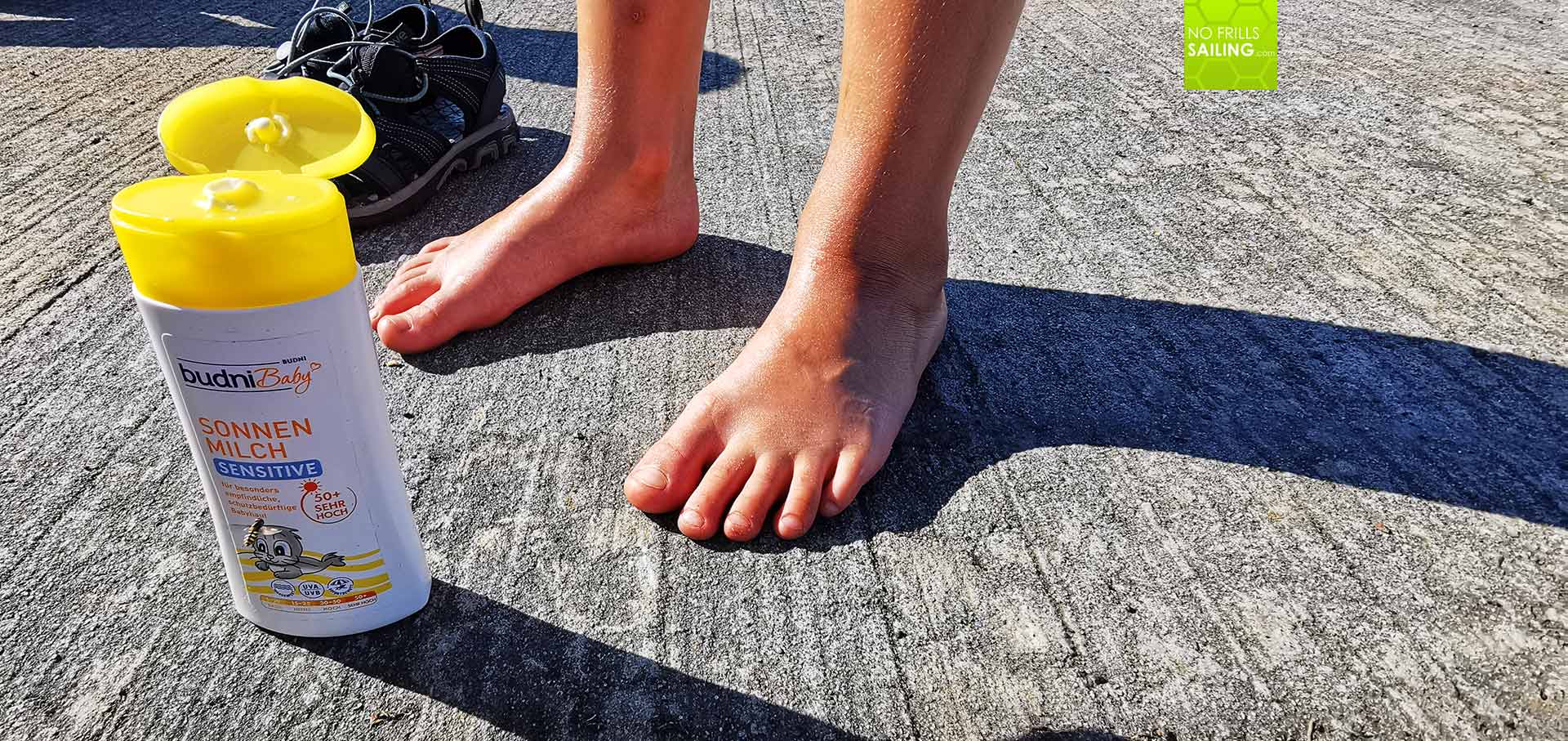
Talking of all these fun outside activities, one should never forget to protect the kids from harmful UV radiation of the sun. We always use factor 50 sunblocker (also on us adults) and when there is no overcast at all, we tend to make the kids wear UV-blocking T-shirts or even long sleeves. Skin cancer is a serious threat to sailors and even more threatening to the young, defenseless skin of children.
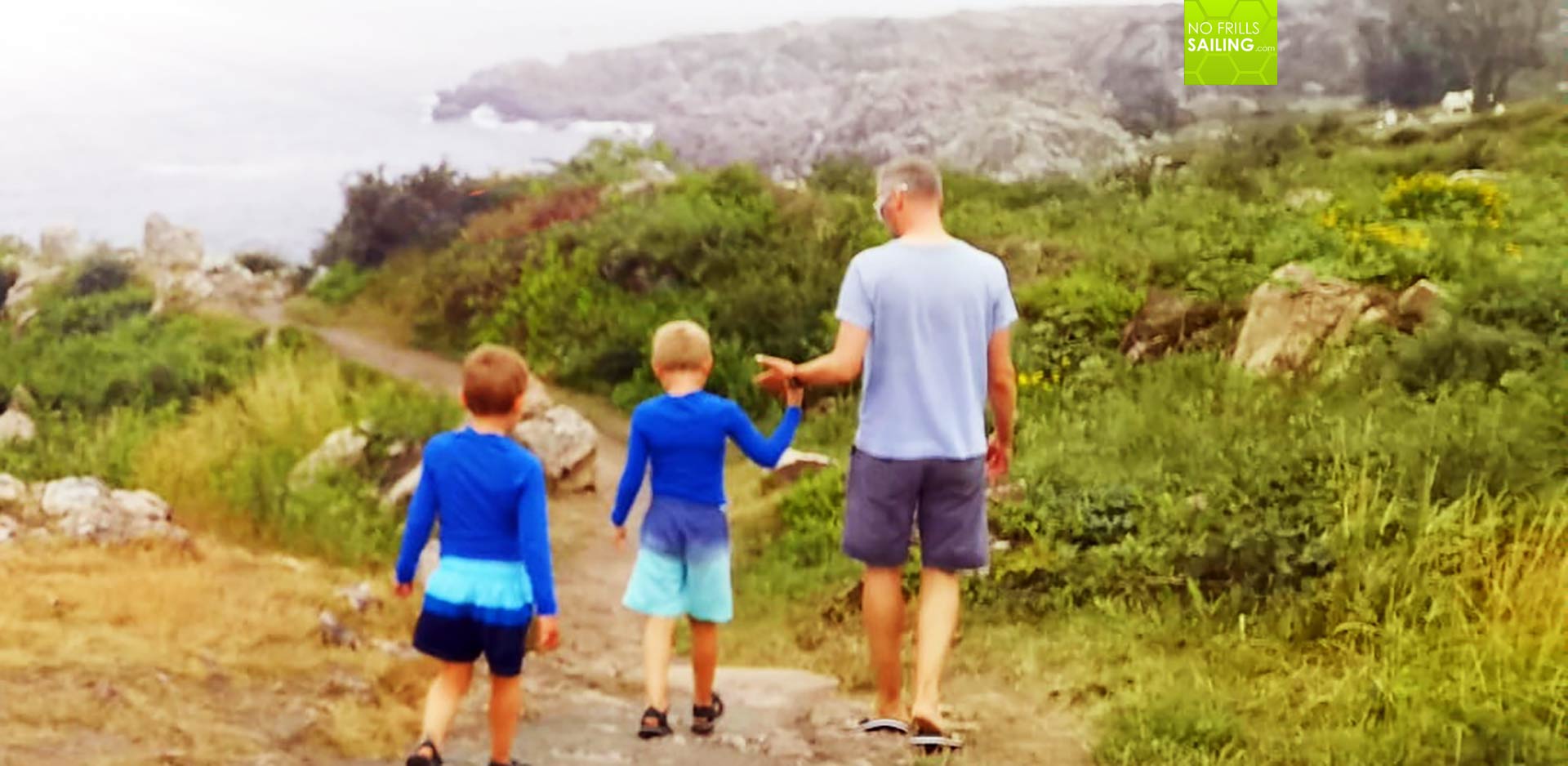
Other than that, we mostly did things by food. When sailing to touristy developed spots, you might find a rent-a-bike which will enhance the radius of action dramatically. We did this on Bornholm too and had a wonderful bike tour along the coast line, on sand-trails and through thick forests. Big fun for the kids, a tasty picknick and the feat off a big sweet tasty watermelon too. I refrain from renting a car because for me that would feel like spoiling this “back to nature” trip. But it might be suitable for locations far off.
Eating and resting one´s ores
My Seascape 27/First 27 SE is a very small boat, as you may know. I do have some cooking capabilities, like my Lotus grill BBQ station which works absolutely fantastic on a boat and the one-flame stove, the Jetboil. My partner brought along a mobile, one flame induction cooker, which of course only works when 230 V or shore power is available. Essentially, we were eating one pot meals – but this is absolutely fine for kids who normally just crave for “pasta without sauce”.

Off-boat, at least that is normal for Denmark, you will find seating arrangements or BBQ-corners in every harbor. When berthed on a jetty that might be connected with a short walk, but in Denmark you may sit on the quayside right next to your boat and have a meal. Which is a wonderful thing: Sitting there as a family, feasting and enjoying good, simple food, looking on your boat and talking about the past day or the day to come. Everything is connected and thus the connection between boat and family grows deeper by the day.
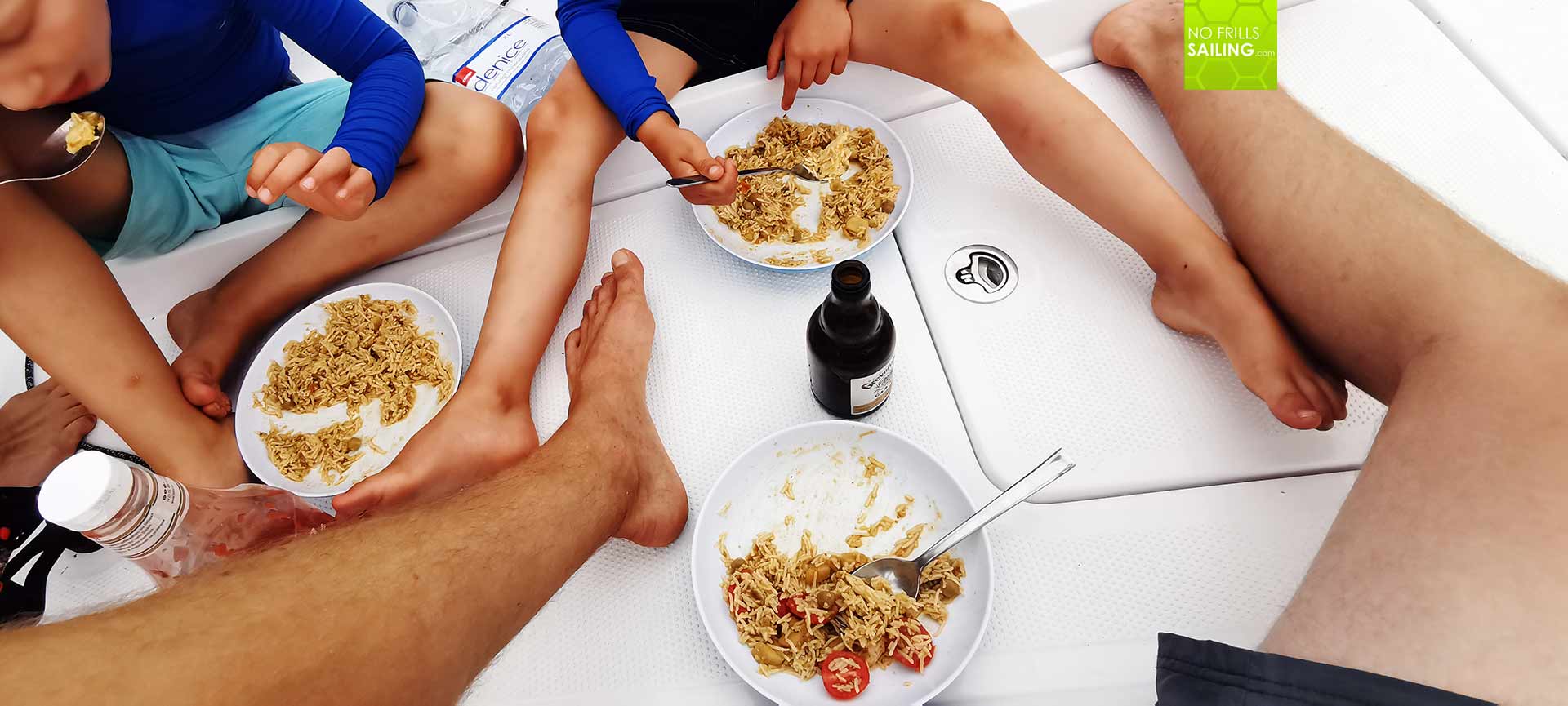
Talking of one-pot-dishes, this mostly involves a carbohydrate-base, which mostly is pasta but might as well be rice (pre-cooked) or even pre-cooked canned potatoes. These are cooked in water and the cooking water acts as base for the sauce as well. Sometimes we would use canned sauces, sometimes a quick mixture of cream, canned tomatoes and some herbs might do the trick. I will most certainly dive deeper into this “one pot-topic” to fathom the edges and refinements of this style of providing simple but tasteful meals.

We mostly ate in the cockpit, which was pretty much fun for the kids. Sitting on ones buttocks, holding the dishes and eating with simple spoons clearly fitted our little “pirate boat”. Kids like to “break rules” and do things different, they loved the camping approach and had great fun in this down-to-earth style of nourishment. For me it meant that less crumbs, stains and blurs were apparent down below in the salon and cleaning of the cockpit-mess after a meal was a no-brainer: Just pouring out some water from a bucket and the drying is done by the sun instantly.
Adventure and Pirate Romantics
Now, looking back after one week has passed and the kids are back in their normal life, what has been gone well and what not. To come to a conclusion: It went far, far better than I thought. All the things I was maybe a bit worried that might be stressful for the kids and thus may be rejected did turn out to not bothering them at all. That is, essentially, that sailing might be too boring for them (which it wasn´t thanks to all the activities on- and off-board we had provided), that sailing might be frightening, especially in strong winds with loads of movement through heavy waves (which it wasn´t, moreover, it was fun for them) and last that it might be too long for them, one week, day in and out, on a boat. Nothing at all of my fears turned out to be real.
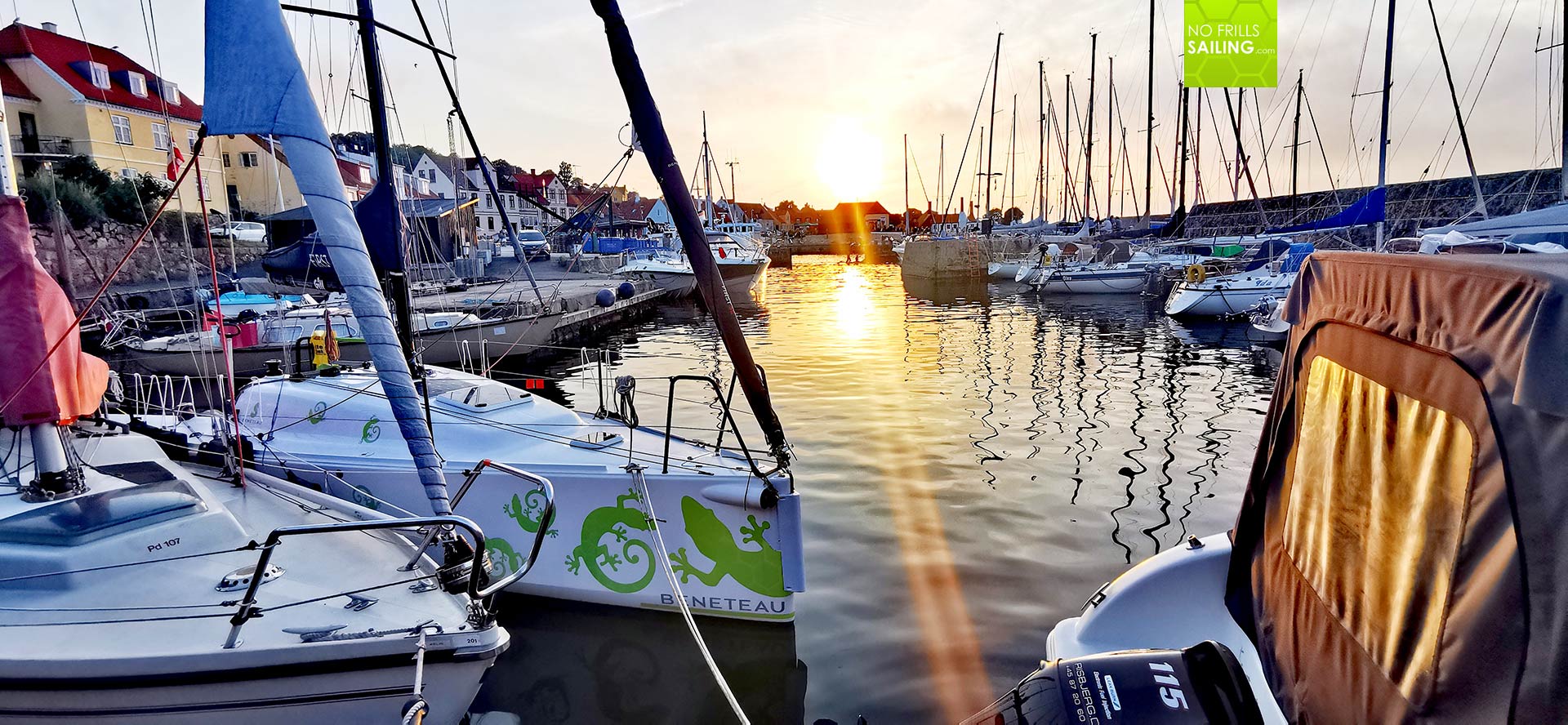
On the other hand, essentially none of the great tasks I had formulated and worked out for them really worked. My older son should have been writing in his own logbook a daily entry: He did not. He simply rejected this and I, cleverly, did not enforce this. My younger son also did not take his “daily picture” with the Polaraid-camera I bought him. I also did not enforce this. I thought that any compulsory activity out of sheer “you have to do it” would spoil the whole vacation, so I took it as a learning. Maybe my kids (currently 5 and 8 years old) are still too young. I will keep on offering this, but never force them to do it.
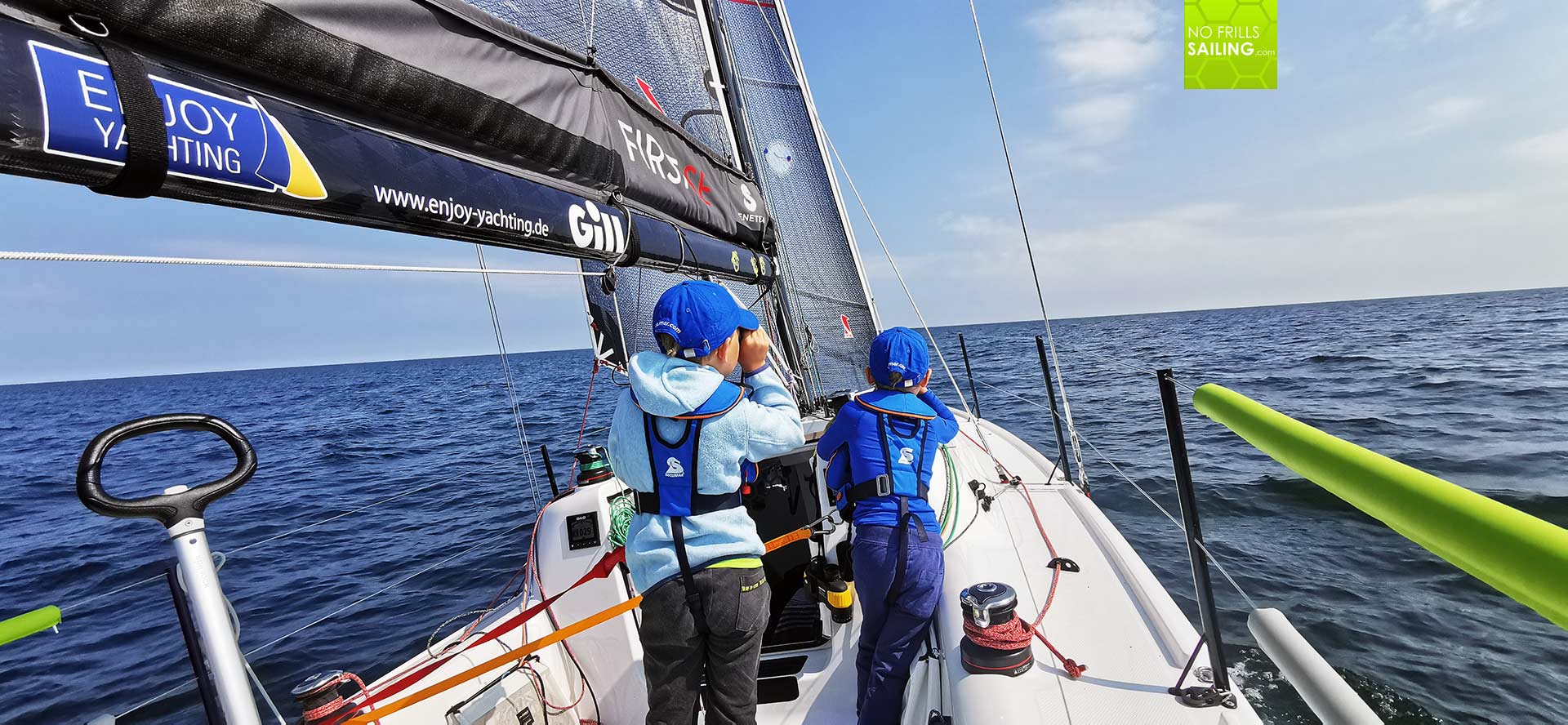
In this my plan went down the drain essentially the first day. That is a big learning. Maybe more improvisation and in-situ activities are the key, maybe my partner was right to bring a lot of stuff onboard which they got used to at home, just like Lego toys, their favourite audio books, some books to look at and work with. I learned that it is good to have a plan – but better to have intuition and a good feel for the situation. Not sticking to this plan and even more so not exerting pressure on my kids to live up to my idea of a perfect sailing holiday was just right.

In the end, I start seeing my ideas as a kind of collection to pull from. Maybe the next time my older son will come to me and say: “Daddy, can I do my logbook entry?”, maybe when he is in second grade, much more firm in his writing skills, this will come naturally. Maybe my younger son will approach me to receive his camera, maybe the boys will volunteer to make a message in a bottle (which was planned as the big highlight on our 13-hour-sailing session from Bornholm back home). I don´t know. But what I know for sure is that force never should have a place on vacation.
My Conclusion
Judging from the feedback I received – and I am still getting – from my two boys they loved the trip. In their minds and imagination we have crossed “a whole Ocean”, which technically is right, we have sailed to a “distant far off island” and have met foreign people, namely the “descendants of the Vikings”, which the Danes are. In their minds they have completed a big journey. That is a story they can tell to their class mates and in kindergarten, sparking new fantasies and plays, laying ground for new adventures of my keen little sailors. For my partner it was big fun too – well, she might have expected a more comfortable and bigger boat, but she also accepted the “camping” character of the small boat and the micro cruising-approach.
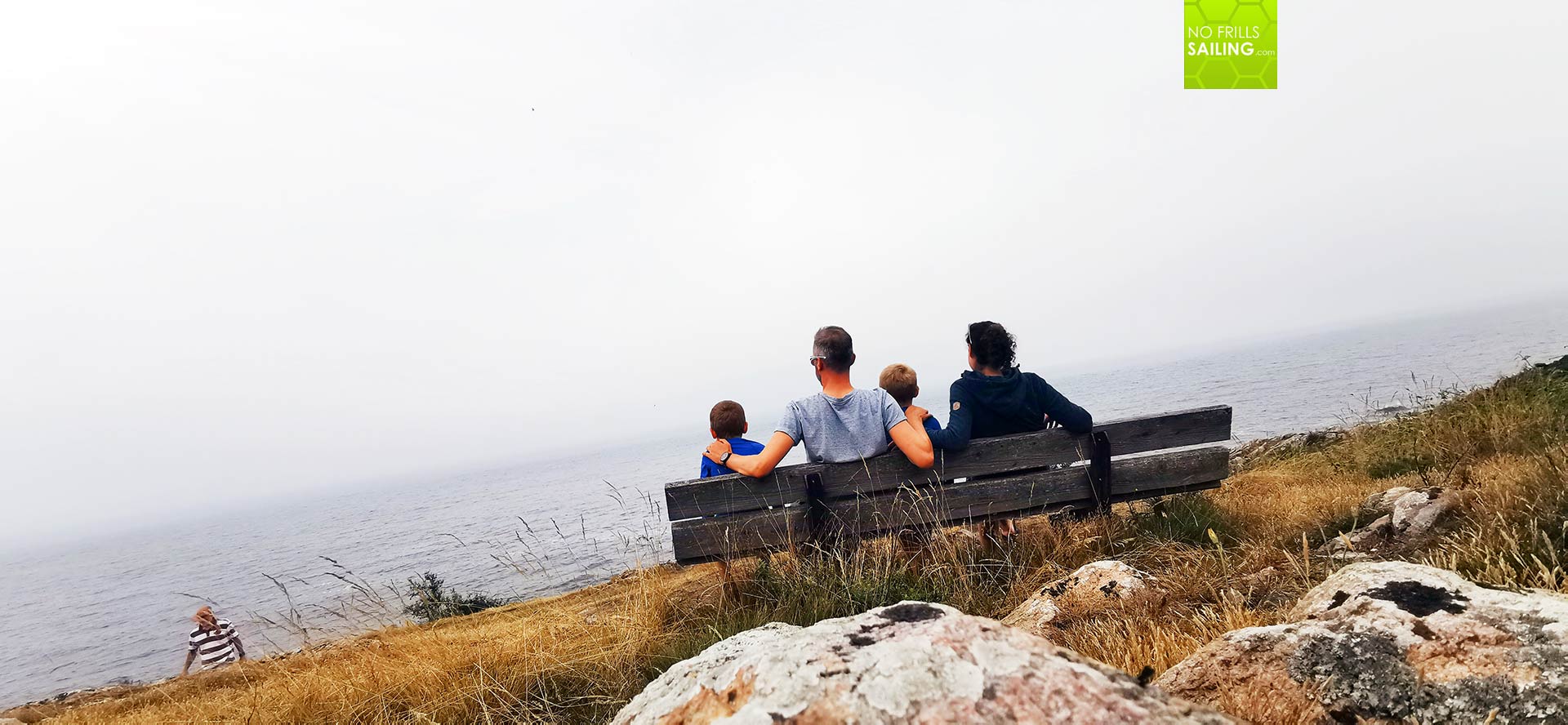
My advice for fathers and mothers planning their first “big” sailing trip with kids would be to be prepared – and be prepared to spontaneously change plan at all times. Be open, listen to your kids and adjust according to their needs. Try to excite them to discover new things, try to show them the beauty of nature, the fascination of weather, of wind and waves. Have them involved in daily routines aboard, just like cleaning up, making the bunks or preparing meals. Act together as a crew, when sailing, be a family when berthed. Sailing and boating is rewarding and kids will love it – when they sense that their parents love it too. Make it something special, make it exciting and fun. If you are good at it, it will lay a groundwork not just for great memories your kids will enjoy thinking of in later life but maybe also to a sailing career for themselves: My older son told me he was “now ready for the Optimist-sailing class.” Well done, I shall say.
You might as well be interested in reading these articles:
All articles on sailing with children
Kid over board? Here´s what to do.
